Genre: Platform Developer: Infogrames Publisher: Infogrames Players: 1 Released: 1995
Hergé’s The Adventures of Tintin comics are among the most successful and consistently popular comics in the world, though the series ended almost fifty years ago as of writing. The success of the series has also seen it adapted for other mediums including radio, cartoons, films and of course — video games. There aren’t a lot of video games based on the Tintin franchise and all, but one of the games are published by Infogrames, including this one. Tintin in Tibet was released in 1995 on multiple platforms, and the Mega Drive version was exclusive to PAL regions. The game is based on one of last Tintin comics of the same name and closely follows the story and events of this comic as well.
The Tintin franchise offers rich material for a video game, but a platformer would not be the first choice I’d make as the adventure genre should have been a more obvious fit and this was still a popular genre at the time of the game’s release. Making a game that follows an existing comic’s story so closely is also odd as it takes away any surprise for players familiar with the comic, who are also the primary audience. An original story or an amalgamation of many stories would have suited much better and was often the direction game adaptations of similar properties took.
It might seem odd to start out the review suggesting what the game could have been, but it is hard not to when the end product is one of the most baffling I’ve ever experienced and I certainly don’t mean this in a positive sense. As mentioned, Tintin in Tibet is a platformer and is based closely on the comic of the same name with only the first level taking place outside of this comic. The game has a smattering of puzzle elements, but the majority of the game involves running, jumping, and occasionally climbing while avoiding the numerous obstacles thrown in Tintin’s way. And pretty much everything that appears in the game is an obstacle for Tintin. There are falling rocks, snow balls, and collapsing platforms but strangely also waiters, pet dogs, and monks. The way everything and everyone is out to get Tintin was common in the earlier comics but not the later ones ,which definitely includes Tintin in Tibet. It is not uncommon for video games to be designed this way but in a franchise like Tintin, it does feel a lot more out of place.
The game’s presentation doesn’t give any hint of this but Tintin in Tibet is a very difficult game that will require a lot of patience for anyone who wants to finish it. There are difficulty levels, but they really don’t make a lot of difference. Even on “easy,” the game is totally unforgiving. I needed practice to overcome most obstacles in the game and rarely anticipated new ones. This can be experienced from the first level where you will quickly learn that virtually anything that moves is a threat to Tintin. You also have no way to dispatch obstacles and must avoid them, which at least is generally consistent with the character.
Some games can be very difficult but still fun and rewarding to play. Some can even deliberately troll the player and remain fun. This does neither. From the outset, you are faced with relentless and unforgiving levels that will truly test your patience. Tintin can take multiple hits, but many dangers result in instant death, and Tintin’s life is not restored between levels. There are apple power-ups that restore life, but these are rare and often placed so as to be too risky to bother with. There are also occasional 1ups and time extensions, but both are also very rare.
Time is another factor that makes the game much more of a slog. The levels require patience, and the game design seems to encourage a slower pace but time is always limited, which forces you to keep moving despite this. This leaves no way to proceed but by remembering each and every obstacle and how to avoid it, and this also means a lot of “Game Over” screens. There is a password system, but you only receive a password three times out of the game’s fourteen levels. The frustrating difficulty could have been mitigated significantly by simply offering a password at the end of each level.
One might assume that I am just complaining about the difficulty, but the level design and game mechanics are what really make the game difficult. It is often confusing where Tintin needs to go, as platforms often blend with background scenery. Sometimes, the way to go also requires incredibly precise actions — especially in later levels when using a pick-axe. A level where Captain Haddock and Tintin are tethered together and mountain climbing is probably the best example. It is not at all clear where to go or just how far they can separate before one falls. I could never be sure how far I could separate before one would fall or even where I could make firm holds with any consistency. Even performing simple mechanics like picking up objects requires Tintin to be in a very precise spot to work.
Most of the game involves careful platforming, but there are also some puzzle and adventure elements on certain levels. These involve finding or helping characters at certain points, moving objects, and working out simple matching puzzles. The latter features heavily in the monastery level late in the game. These elements give a hint of what could have been because had the developers fleshed out these elements while reducing the relentless hazards, the game would have been far more unique and worked much better with the source material.
The one really outstanding element of Tintin in Tibet is the visual presentation. The developers have captured the art of the comics brilliantly, and all of the characters and most of the locations will be familiar to anyone who is familiar with the comics. There are also extracts from the comics used between levels and occasional exposition within that further adds to this. The same, unfortunately, cannot be said about the grating music and sound effects.
What really disappoints me with Tintin in Tibet is not the frustrating experience I had with it but knowing what it could have been had the developers taken what they developed in a different direction. An emphasis on exploration, and puzzles, along with some problem-solving found in adventure games, could have made this a stand-out and fondly remembered title. While mastering this would make for an impressive speedrun, the game will mostly only be of interest to curious Tintin fans. The latter (along with almost everyone else), would be far more entertained by re-reading the comic. The Adventures of Tintin series has stood the test of time unlike so many throwaway cartoon licenses and deserved a lot better than this.
SCORE: 3 out of 10

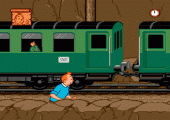
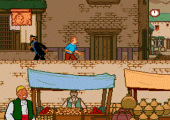
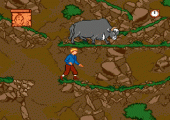
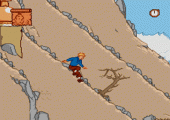
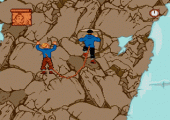
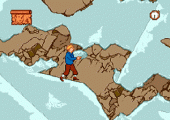
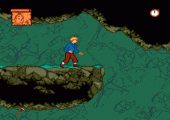
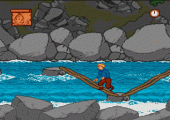

Recent Comments